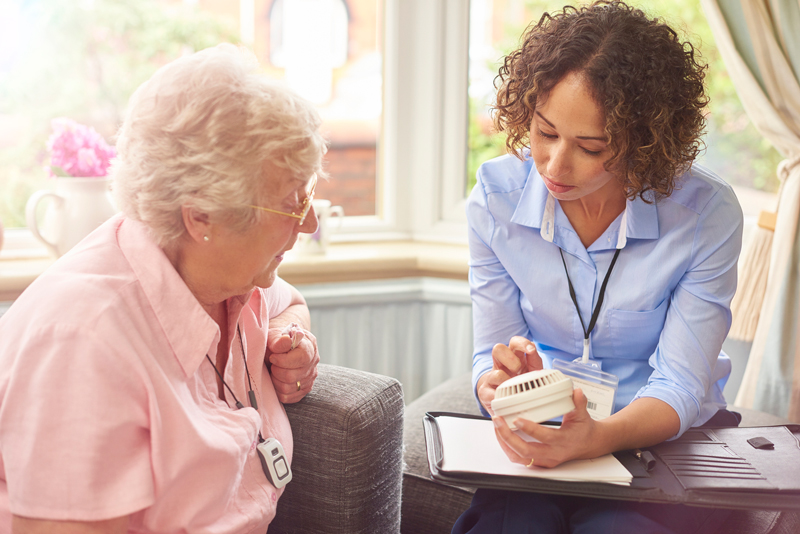
Staying safe at home is possible for seniors with minor home modifications.
With the great majority of older adults choosing to continue to live at home throughout aging, it’s important to carry out a thorough home assessment to search for and fix any dangers and ensure the older adults you love are staying safe at home. The most effective way to accomplish this is to begin outside of the home and work your way in, room by room, picturing what your experience would be in each location if you struggled with the common challenges experienced when we grow older, such as with vision or balance.
Listed here are some practical modification ideas for each part of the house to get you started:
Outside:
- Assess sidewalks along with other walking areas for uneven pavement, loose bricks, cracks, leaves, as well as other debris
- Verify that the address number, either on the mailbox and/or home itself, is clearly visible in the event emergency responders need to locate the house
- If there are stairs or a ramp leading up to the entry door, a handrail should be put in on both sides
Foyer/Entryway:
- Clear away any clutter, cords, or other things that could cause a person to trip
- Utilize a no-trip threshold in the doorway
- Ensure there’s ample lighting, and a small table to place mail, a purse, and other items when entering the house
Kitchen:
- Keep commonly-used items in easy-to-reach places
- Utilize Lazy Susans, pull out cabinets, and shelves for better access
- Use touch, sensor, or lever handles in place of knobs that turn
- Set water temperature no higher than 120 degrees F
- Install grab bars beside the toilet, in the tub/shower, and in any other strategic locations
- Consider a higher toilet, or add a toilet seat riser, as well as a shower chair and handheld shower wand
- Always use non-slip strips in the tub, as well as on the floor, and take away any throw rugs or mats (or ensure they’re securely attached to the floor)
Bedroom:
- Place nightlights both within the bedroom itself and in the hallway leading to the bathroom
- Remove any obstacles between the bed and doorway, and any other areas in the room in which the senior may need to move around
- Replace throw rugs with carpeting
Throughout the home, be certain that walkways are clear and spacious enough to accommodate a wheelchair or walker. It’s also important to install smoke and carbon monoxide detectors, testing them routinely and replacing batteries at least every 6 months.
And, consider an emergency response pendant for your senior loved one to wear, which may be pressed to call for help in case of a fall, as well as other emergencies.
Most importantly, partner with an established and dependable provider of in-home and memory care in Portland and the surrounding communities, like Anthem Home Care. We are available to perform a home safety assessment and recommend further actions that may be taken to ensure your family member remains safe, as well as provide a wide range of in-home care services, personalized to each individual’s unique needs.
Reach out to us at 361-643-2323 any time to learn more!
